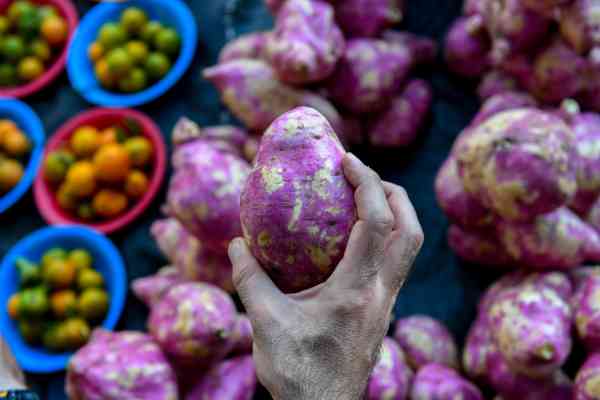A giant taro patch in Tonga. Photo : Filippo Guzzon.
With its 3000-year history of cultivation in South Asia and the Pacific, the giant taro (or giant elephant ear taro) has an impressive number of plant species (over 3,700) distributed worldwide. It is considered a valuable food resource and has pharmaceutical qualities.
However, despite its numerous benefits and potential to increase the food resources of subsistence and small-scale farmers in Pacific countries, there is a scarcity of published results and no current active breeding programme for the crop.
This current state of the giant taro is detailed in former SPC Centre for Pacific Crop and Trees (CePaCT) Genebank Curator, Filippo Guzzon and his colleague Dr Jonas Muller’s peer-reviewed journal paper The forgotten giant of the Pacific: a review on giant taro (Alocasia macrorrhizos (L.) G.Don).
“The giant taro crop is a perfect example of what PGR (Plant Genetic Resource) scientists call a neglected or forgotten crop,” says Guzzon, who is a plant biology specialist that focuses on the conservation of plant genetic resources.
“Despite its useful traits (e.g. high yielding and resistant to abiotic and biotic stresses), there is very little published research on this species,” he says. “To cope with the challenges of the future we need to harness the potential of neglected crops, some of which have useful characteristics that are key for more resilient and diversified agriculture.”
The peer-reviewed paper states that the Giant Taro is widely used traditionally in folk medicine for a range of different conditions and diseases such as diabetes, pus in the ear, jaundice, snake bites, and constipation. In Malaysia, it is used to treat cough and toothache. In Tonga, it is traditionally second only to yams as a gift presented to the nobility, while Fijians use the leaves to cover the lovo, the traditional earth oven.
Its production yield is high. Some Giant taro cultivars that were studied could produce over 78,600 kg per hectare per year and did not detect any significant pest and disease problems during cultivation.
In the Pacific there are several other crop and tree species that have a strong link with local communities and have a lot of useful traits. Most of these species are often understudied and rather unknown in scientific literature. SPC’s genebank CePaCT studies and conserves many of these crops and trees. Since 2009, CePaCT has distributed a total of 144 plantlets to five different countries and territories (Belgium, Cook Islands, Kiribati, Tuvalu, and Samoa) belonging to 10 different accessions of giant taro.
Further research similar to the paper from Guzzon and Muller will be useful to highlight to the scientific community the potential of Pacific plant species to enhance research activities on these unique crops and move toward a more resilient agricultural future.
“In Copenhagen (Denmark) there are six wooden sculptures of the giants that is called ‘forgotten giants’, says Mr Guzzon. “We liked the idea of considering giant taro as ‘the forgotten giant of the Pacific’, being an aroid species of impressive size but so far neglected by research programmes.”


